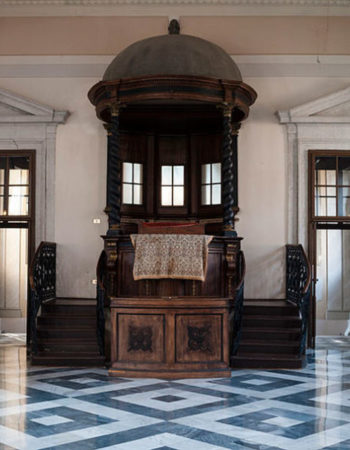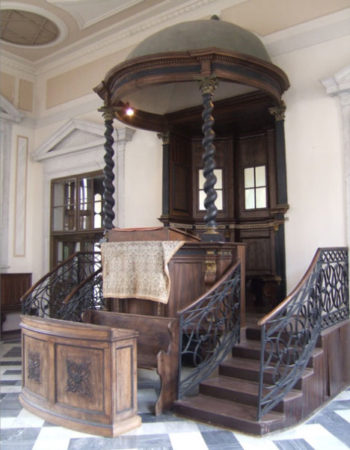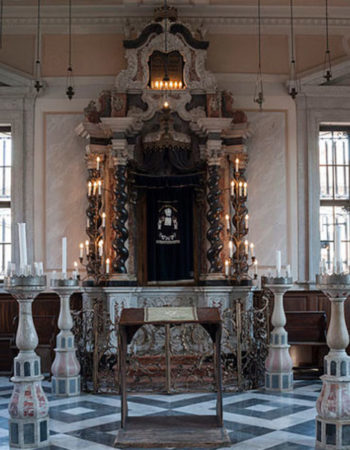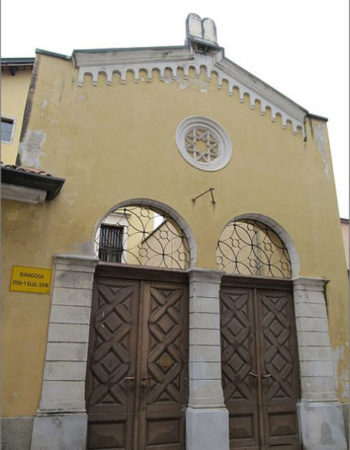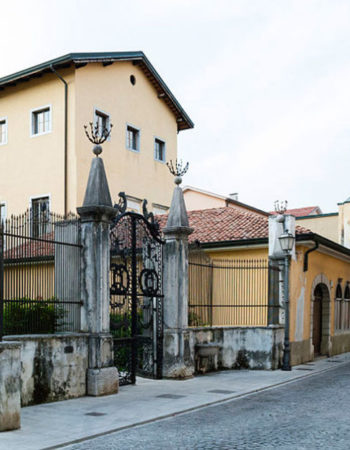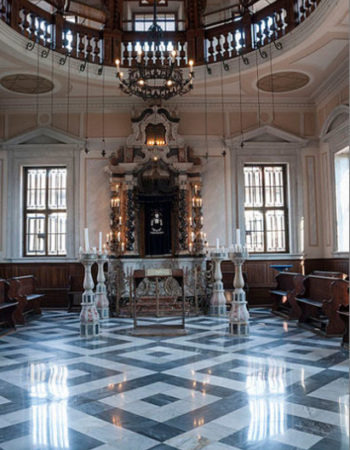Occupying the first and top floor is the hall of the synagogue, which is arranged according to the traditional bifocal layout, with the tevah and aron placed opposite each other on the short sides and benches for the public lining the longer walls and facing the central axis.
Flanked by the two entrances to the hall, the tevah is a sober structure in cedar wood, raised and covered with a domed canopy with spiral columns. Along the back, slightly protruding over the wall of the hall, an inscription commemorates the synagogue’s narrow escape from destruction in 1761.
On the opposite side is a marble aron hakodesh, also in Baroque style, featuring twisted columns in black marble and a high scrolled pediment with the Tables of the Law. Around the front of the aron are wrought iron railings, a late 18th-Century work attributed to the blacksmith Martin Geist.
At mid height an elegant oval-shaped women’s gallery runs along the entire perimeter of the hall.
Via Ascoli, 19 – 34170 Gorizia
Included in the visit to the ‘Jerusalem on the Isonzo’ museum
First floor without elevator

